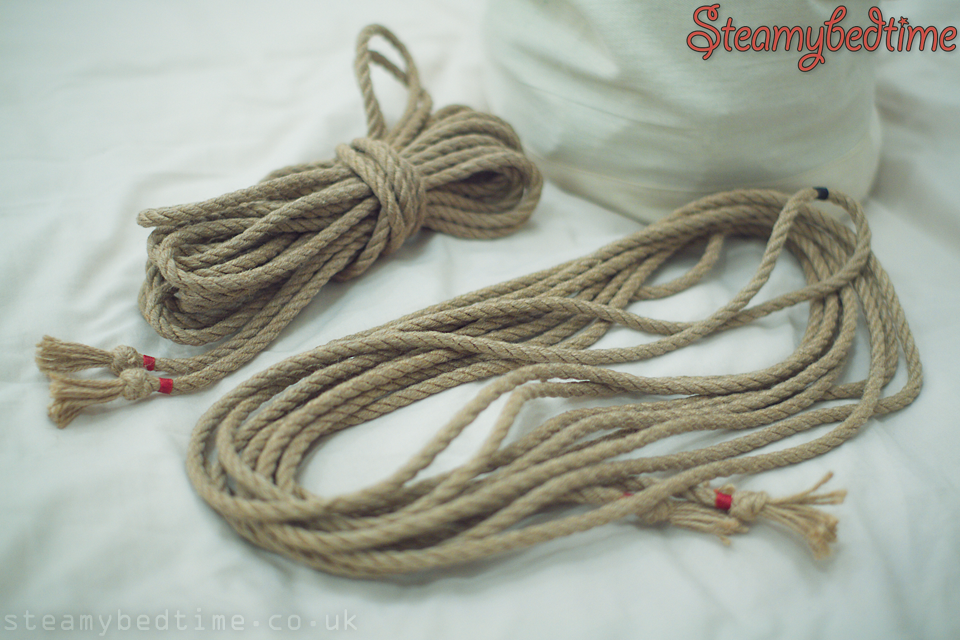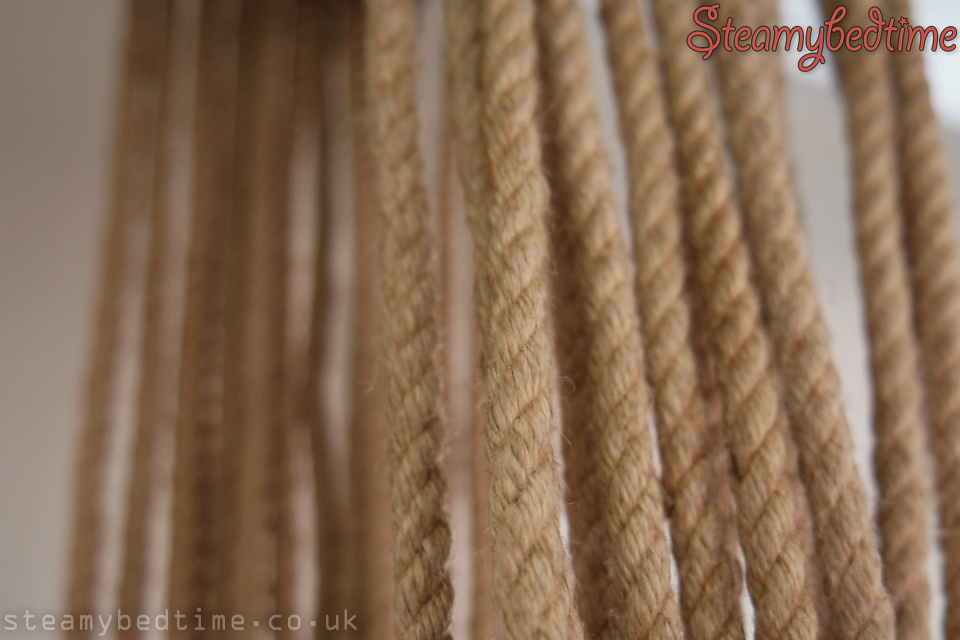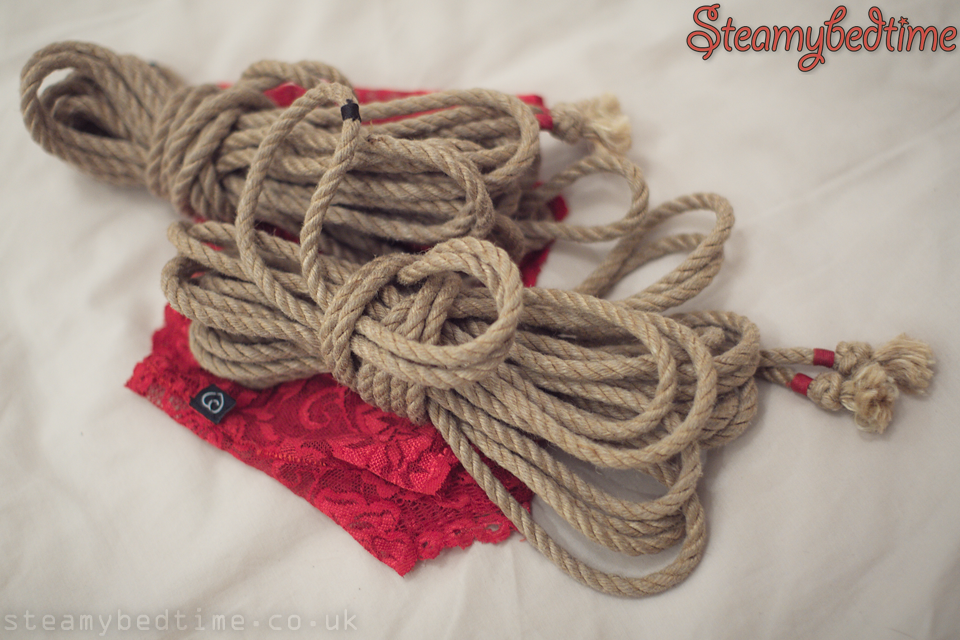Conventional wisdom is that ropes should normally be hung in a clean, dry atmosphere for storage, and to avoid developing kinks; the ropes' owners probably already have enough kinks of their own! As a natural fibre it should also be allowed to breathe; that's to say, not stored in a sealed, airtight container.
Due to space constraints we've had to compromise, storing our ropes loosely coiled in a lightweight cotton bag. So far, there have been no problems, and the bag takes on a wonderful aroma of the jasmine essential oils that we added to our homemade beeswax and jojoba conditioning paste.
However, in the heat of the moment nobody wants to be faced with an unruly bundle of spaghetti and so it's a good idea to select a few ropes and "hank" them when you're ready to play.

Prepared this way, the short loop of rope acts like a parachute ripcord, a sharp tug releasing the entire bundle.
We highly recommend the free Rope Care and Treatment course on ShibariClasses. About 8 minutes into the video there is a very clear description of this approach to hanking rope. Also, at around 7 minutes there is an alternate method which gives a nice, clear "snap" as you unfurl the rope. (Watch the whole video though, because it has some great info on looking after your ropes!)
For a briefer introduction (and this is where we originally learned the method from) there's this Bondage Erotique video, Rope Hanking Version One. A feature of this that we found helpful is the technique of locking in the first wrap by changing direction and then forming the quick-release loop.

In the image above, a set of ropes are hung over a broad PVC pipe after being lightly re-oiled; it would be an ideal storage method if you have the space.
References
To take a closer look at this method for hanking your rope into bundles, here are a few of the resources that we found to be most helpful.
- How to Store Rope (Esinem)
- Rope Hanking Version One (Bondage Erotique)
- Our earlier book review: Shin Nawakiri's Essence of Shibari
- Rope Care and Treatment (around 8min point)
Okinawa Jute from Esinem-Rope is currently our most frequently used rope.
Next week we look at some tips for managing a length of rope, and a practice method we found useful...







